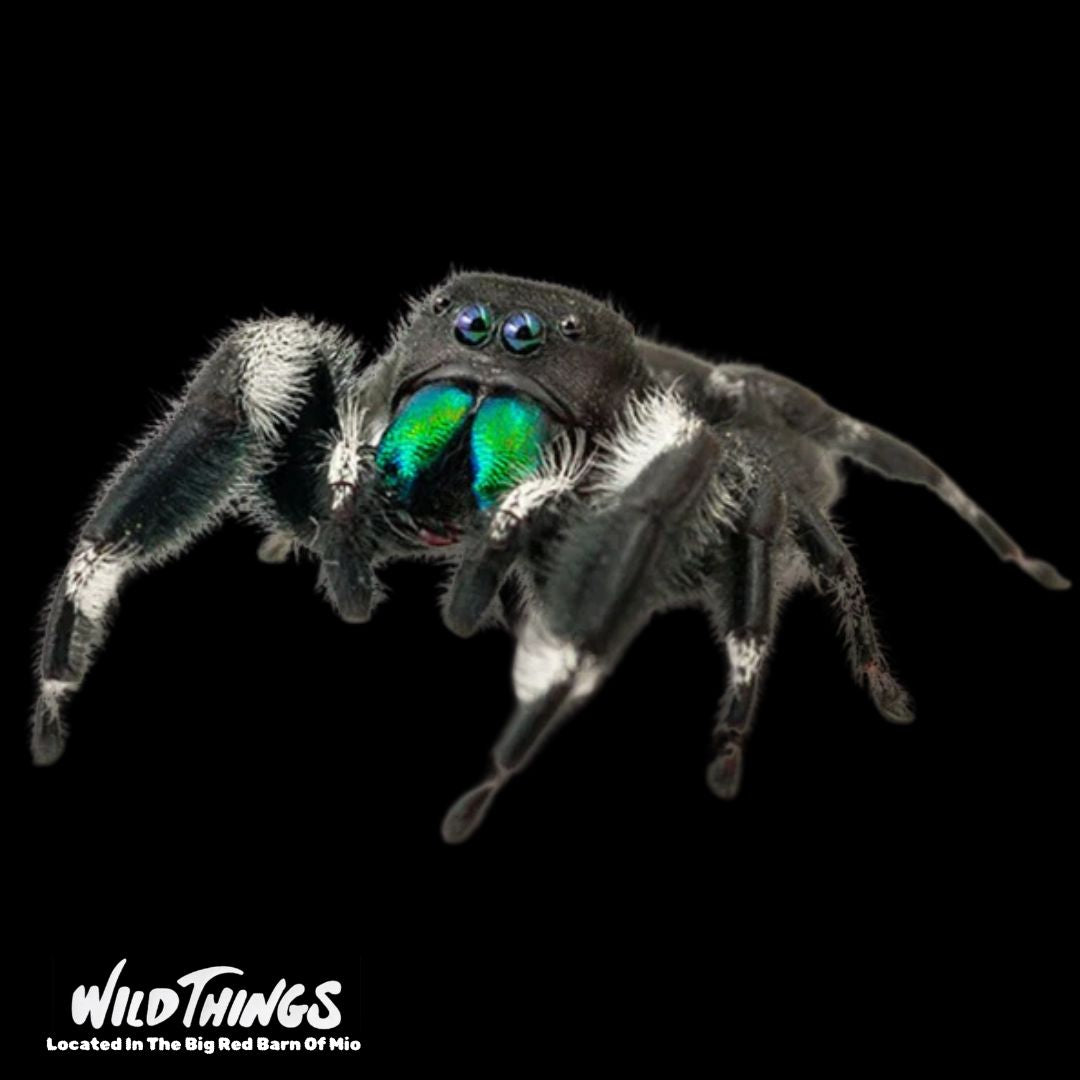AuSable River Outdoors
Jumping Spider
Jumping Spider
Couldn't load pickup availability
Species: Jumping Spider
Scientific Name: Phidippus audax
Origin: Jumping spiders are native to North America and have been introduced to Hawaii, Nicobar Islands, Azores, and the Netherlands.
Lifespan: The average jumping spider’s lifespan is between six months to two years. In captivity, jumping spiders may live up to three years. However, species and sex also play an important role in the lifespan of jumping spiders. Female jumping spiders tend to live longer than males.
Size: Adult jumping spiders can range in size from 1 to 25 mm (0.04-0.98 in), but the majority are between 5 and 10 mm.
Enclosure Type: Jumping spiders are vertical explorers, so a tall enclosure is ideal. Opt for glass or high-quality plastic for clear visibility and easy cleaning. Make sure the lid is secure with fine mesh for ventilation.
Enclosure Size: Jumping spiders are active explorers. Choose an enclosure that’s spacious enough to accommodate climbing, jumping, and hiding. A minimum size of 8 x 8 x 12 inches is recommended. Height is particularly critical, as these spiders love vertical space for climbing and web-building.
Substrate: Naturalistic Substrates — This makes it easy to set up a naturalistic vivarium quick and easy. It will save you time and extra expenses and allow you to reproduce a small jungle in your house. Not only are these substrates cost-effective and straightforward to use, but they’re also high quality.
Spider Incubation Media — This is important to your success in breeding jumping spiders. It must retain water to make available the required humidity to developing jumping spiders. Furthermore, it will resist the growth of mold and make the enclosure not overly wet.
Premium Spider Substrates — This is well rugged and has proven to serve as a multipurpose substrate ideal for many jumping spiders’ species, including other amphibians or reptiles. The materials are environmentally friendly and are sourced from renewable materials to ensure your jumping spider gets the very best enclosure.
Décor: Enhance the enclosure with various decor elements such as plants, branches, and hides. These additions not only make the enclosure more aesthetically pleasing but also provide necessary enrichment for the spider.
Water: Water dishes are sometimes used in bug enclosures. While they add visual appeal, bug enclosures should be avoided as jumping spiders can drown. While they don’t necessarily drown at first when in contact with water, they can drown when falling into the water dish. Even more, some spider pet owners don’t add any type of moisture inside the enclosure, so the water dish should be skipped here. To provide hydration, use a fine-mist spray bottle to mist one side of their enclosure. Use purified or distilled water instead of tap water, as chemicals like chlorine in tap water can harm spiders.
Temperature: Normal temperatures for these enclosures range between 69 and 83ºF. Maintaining proper temperature may be important in cool rooms but many don’t use any heating if the enclosure is in common rooms of the house. Normal room temperatures are sufficient for jumping spiders to live a long life. Many can even survive indoors in areas outside of the enclosure on their own so there isn’t much change in their temperature comfort in an enclosure. Low temperatures are problematic for these spiders. Wintertime comes with a period when heating is needed in the house to avoid having the spiders enter diapause.
Humidity: Maintaining high humidity in the enclosure is recommended. Higher humidity may require spraying more water inside during the warm summer months. Distilled water is recommended for spraying the enclosure. You can add 1 spray per wall or 1-2 sprays of distilled water per maintenance routine.
Lighting: Aim for 12 hours of lighting per day with a warm programmable light. Choosing an LED light is not complicated as most 6.000K-capable lights are enough for these enclosures. If you’re using an LED light, you may want to program it for 12 hours per day to offer sufficient light for these spiders. Most jumping spiders are diurnal and may only consider eating with light. They tend to retreat and even hide when it’s dark, despite their large eyes.
Type Of Diet: Jumping spiders are predominantly carnivorous, feeding on small insects in the wild. The type of food they eat, and the eating frequency changes with the age of the jumping spider. While each species can be different, it may be important to experiment and spot the feeding habits right for your species.
Types Of Food: Crickets, flies, roaches, and various worms.
Feeding Schedule: How often you feed your jumping spider depends on its age and size. Adult should be fed every 2-3 days. Juveniles may require daily feeding due to their growth rate. Monitoring your spider's appetite and adjusting the feeding schedule accordingly is essential.
Supplements: Supplements are not needed for pet spiders.
Share

